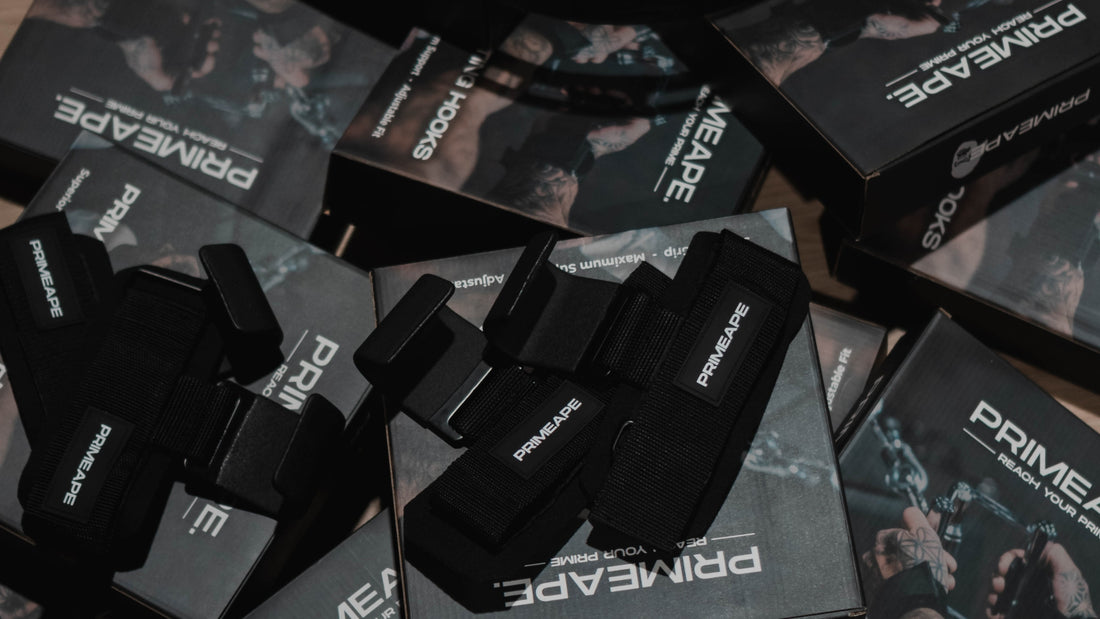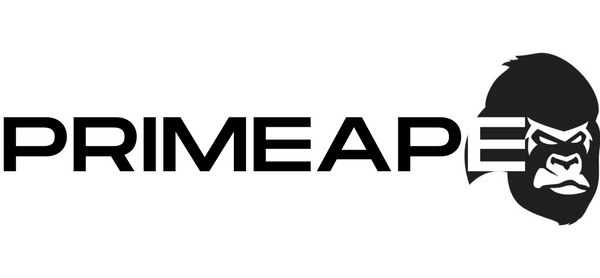
How to Use Lifting Hooks for Maximum Grip Strength and Safety
Share
If you’ve ever felt your grip giving out before your muscles do during a heavy lift, lifting hooks might just be the game-changer you need.
Whether you’re smashing deadlifts, pulling heavy rows, or cranking out pull-ups, these handy tools can help you focus on your strength without worrying about your grip.
Here’s a simple guide on how to use lifting hooks properly to enhance your performance while staying safe.
What Are Lifting Hooks and Why Use Them?
Lifting hooks are like your secret weapon for heavy lifts. They’re made up of a strap that wraps around your wrist and a sturdy hook that grips the bar for you.
They’re a lifesaver when you’re tackling exercises that demand more from your grip than your muscles. Think of them as a support system for your hands so you can focus on the big lifts.
Common benefits include:
- Taking the pressure off your hands and fingers.
- Allowing you to lift heavier weights.
- Reducing strain on your grip muscles, letting you target your back, shoulders, and other larger muscle groups.

Step-by-Step Guide to Using Lifting Hooks
Getting the most out of your lifting hooks isn’t rocket science, but a little know-how goes a long way. Follow these steps:
1. Put Them On Securely
Start by wrapping the wrist strap snugly around your wrist. The strap should feel tight enough to provide support without cutting off circulation. Ensure the metal or padded hook sits comfortably in your palm.
- Wrap the strap firmly, using Velcro to secure it.
- Position the hook so it aligns with your grip.
- Double-check that everything feels stable before lifting.
2. Position the Hook on the Bar
Place the hook underneath the barbell, dumbbell, or pull-up bar. Let the hook-carry the weight while your hands lightly hold the bar for balance.
- Align the hook in the center of the bar for stability.
- Avoid gripping too tightly; the hook will handle the load.
- Ensure the bar feels balanced before starting your lift.
3. Focus on Form
With your grip taken care of, focus on your technique. Proper form ensures you target the right muscles and avoid injuries.
- Keep your posture strong and your core engaged.
- Use lifting hooks only when grip fatigue limits your performance.
- Avoid relying on hooks for all exercises to maintain natural grip strength.
4. Practice Safe Lifting
Ease in using lifting hooks by starting with manageable weights. This helps you get used to the feel and function of the hooks.
- Inspect your hooks for wear and tear before each use.
- Gradually increase weight as you build confidence.
- Replace hooks with frayed straps or damaged metal to prevent accidents.
When (and When Not) to Use Lifting Hooks
Lifting hooks are a tool, not a crutch. Used wisely, they can boost your performance without compromising your overall grip strength. Here’s a breakdown of when they’re most beneficial and when you might want to go without:
Use Them For:
Lifting hooks shine in exercises where grip fatigue often limits your performance before the targeted muscles are fully worked. These include:
- Deadlifts: Heavier deadlifts demand a strong grip. Hooks let you focus on engaging your back and legs without worrying about your hands giving out.
- Barbell or Dumbbell Rows: For rows, lifting hooks help you maintain proper form and fully activate your back muscles, especially when handling heavy weights.
- Pull-ups and Chin-ups: Struggling to hang on during high-rep sets? Hooks reduce the strain on your fingers, letting you concentrate on your lats and biceps.
- Shrugs: Since shrugs target your traps, hooks allow you to lift heavier weights without your grip being a limiting factor.
Avoid Overuse:
While hooks are incredibly helpful, relying on them for every exercise can hinder your grip strength development. Skip them during these situations:
- Grip-strength-specific exercises: Movements like farmer’s carries or plate pinches are designed to challenge and improve your grip. Using hooks here defeats the purpose.
- Lifts requiring hand connection: For exercises like bench presses, where stability and direct hand control over the bar are crucial, lifting hooks are not recommended. They can interfere with your control and compromise safety.
- Everyday training: Overusing hooks can lead to over-reliance, weakening your natural grip. Reserve them for specific heavy sets or when grip fatigue becomes a limiting factor.

Pro Tips for Maximum Grip Strength and Safety
Lifting hooks are great, but to truly maximise their benefits, it’s important to use them wisely. Combining hooks with natural grip training will strike the perfect balance between strength and safety. Keep these tips in mind:
- Warm Up Without Hooks: Start your workout with a few sets using your natural grip to build strength and endurance in your hands and forearms.
- Keep Your Hooks Clean: Sweat, chalk, and dust can make hooks slippery. Wipe them down after each use to keep them in top condition.
- Don’t Skip Wrist Support: Ensure the straps are securely fastened around your wrists to avoid unnecessary strain or instability.
- Know Your Limits: While lifting hooks can help you go heavier, it’s still important to listen to your body and avoid overloading.
Why Lifting Hooks Are Perfect for Aussies
Australia’s fitness culture is booming, with gyms, outdoor training spaces, and fitness challenges becoming a way of life for many. Whether you’re training in a local gym or setting up your home workout space, lifting hooks can help you take your performance to the next level.
For Aussies who enjoy outdoor workouts, lifting hooks are especially valuable. The hot and humid conditions often lead to sweaty hands, making it harder to maintain a solid grip on bars or weights. With lifting hooks, you can power through your sessions without worrying about slipping.
Level Up Your Lifts with Confidence
Lifting hooks are a simple yet powerful addition to your workout arsenal. They’re not just about lifting heavier; they’re about lifting smarter.
With proper use, they can help you break through plateaus and focus on building the strength you’ve been aiming for. Give them a go and see how they can take your training to the next level!
